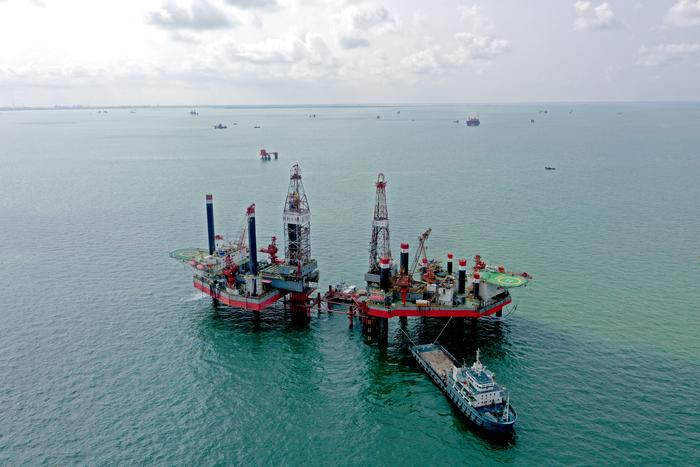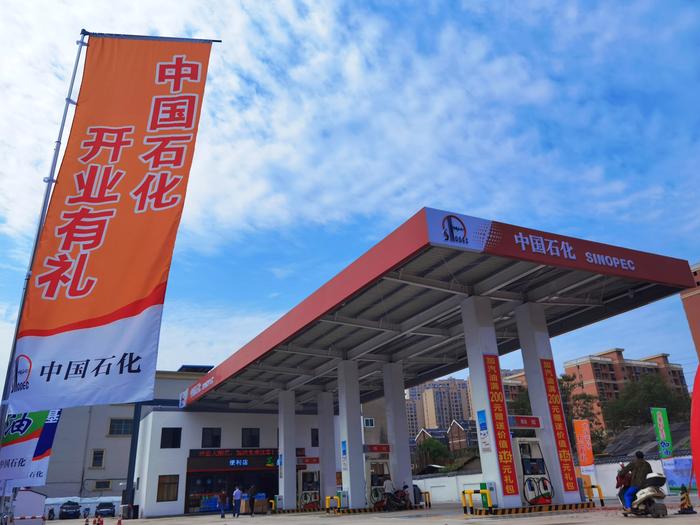|
| 2020-09-28 来源: 中国石化新闻网 |
| 石化新闻 |
中国石化新闻网讯 据9月25日MENAFN消息:正当欧佩克成员国认为他们已经实现了石油市场的再平衡时,被豁免的中非伙伴给了他们令人不快的惊喜。该国交战各派达成停火,一些长期关闭的石油港口以及为它们供油的油田已重新开放。到本月底,该国国家石油公司计划将全国平均日产量从不到10万桶提高到26万桶。与此同时,欧佩克+将减产幅度放宽至每天200万桶。Mercuria首席执行官马尔科·杜兰德认为,市场无法承受这种局面。 杜兰德表示,需求仍低于此前的预期,流入市场的任何额外石油都将无法被吸收。这意味着浮动库存即将增加,因为本月,全球库存每天增加50万至100万桶(不包括该国重启),而最后一个季度的提货量预计为每天100万桶。 在短期看跌的前景中,Mercuria负责人与另一家商品贸易专业公司Trafigura的负责人观点一致。然而,第三位超级交易员的乐观程度令人惊讶。Vitol首席执行官本月早些时候表示,他预计到今年年底,全球原油库存将大幅减少约2.5亿至3亿桶。 本月初有报道称,包括三大巨头在内的大宗商品交易商都在租用更多的油轮在海上储存原油,这引发了人们的担忧,即我们可能会看到类似今年春天的情况,因为岸上储存空间已满,数亿桶卖不掉的石油不得不被倾倒在油轮中储存。封锁结束后,需求开始改善。然而,这种温和的需求提振没有达到所有人的预期。 一个特别令人担忧的趋势是新兴国家的经济复苏速度缓慢,这是石油需求增长的主要驱动力。除中国外已恢复正常外,大多数国家仍在抗击疫情及其对经济的影响。比如印度:它的石油需求被认为是受疫情影响最严重的国家,该国本身的病例总数在世界上排名第二。 根据杜兰德的说法,第四季度的石油需求平均为每天9500万桶。这一数字低于今年春季市场普遍预期的每天9700万至9800万桶。此外,过剩库存的消耗速度预计将低于此前的预期。杜兰德指出,由于炼油厂柴油库存急剧增加,而该国重新开始生产,价格前景再次变得严峻。 Mercuria负责人表示,石油市场上最大的问题是柴油库存过剩。随着欧洲许多国家再次限制流动,现在燃料需求(特别是喷气燃料)的任何改善都可能会进一步放缓, 与此同时,欧佩克已无选择。卡特尔及其在欧佩克+中的合作伙伴将于今年晚些时候讨论下一步措施,其原始计划包括从2021年1月起进一步放宽200万桶/天的减产幅度。而油价现在的走势以及最后一个季度可能的走势,成为欧佩克内部争论的一个话题,因为一些成员国比其他成员国更迫切需要石油收入。 冯娟 摘译自 MENAFN 原文如下: OPEC In Trouble As Oil Outlook Worsens Just when they thought they had rebalanced the oil market, OPEC members were served an unpleasant surprise from exempted fellow in Africa. The country's warring factions reached a ceasefire, and some long-shuttered oil ports have been reopened, along with the fields that feed them. By the end of the month, the National Oil Corporation plans to boost the average daily output of the nation from less than 100,000 bpd to 260,000 bpd. Meanwhile, OPEC+ has relaxed its production cuts by 2 million bpd. The market, according to Mercuria chief executive Marco Dunand, cannot handle this. In an interview for Bloomberg, Dunand said demand was still weaker than previously expected, and any additional oil flowing into markets would fail to be absorbed. This means a looming build in floating storage as this month, global inventories rose by between 500,000 bpd and 1 million bpd—and that's excluding this country's restart— while drawdowns over the final quarter were seen at 1 million bpd. In his bearish outlook for the immediate term, Mercuria's head is in sync with the head of another commodity trading major, Trafigura. The third super trader, however, is surprisingly optimistic. Also in an interview with Bloomberg, Vitol's chief executive said earlier this month he expected global crude oil inventories to shrink considerably by the end of the year. While both the heads of Trafigura and Mercuria expect stocks to build first before starting to decline, Vitol's chief said he expected a drawdown of some 250-300 million barrels by the end of the year. Reports emerged earlier this month that commodity traders—including the Big Three—were chartering more tankers to store crude oil offshore, sparking concern we could see something like a repeat of this spring when hundreds of millions of barrels of unsellable oil had to be dumped on tankers because onshore storage was full. After the lockdowns ended, demand began improving. This moderate demand boost, however, fell short of pretty much all expectations. One particularly worrying trend is the slow rate of economic recovery among emerging countries—the main drivers of oil demand growth. Except for China, most are still battling the coronavirus and its effects on their economies. India is a good case in point: its oil demand is seen to be the worst affected by the coronavirus as the country itself suffers the second-highest total case count in the world. According to Mercuria's Dunand, oil demand during the fourth quarter will average 95 million bpd. That's down from a market consensus of 97 to 98 million bpd, made in spring. And the rate at which excessive inventories will be drawn is seen weaker than previously expected. Add to this a dramatic build in diesel inventories because refiners, Dunand noted to Bloomberg, are dumping jet fuel into the diesel pool, and the restart of production and the outlook for prices once again becomes grim. According to the head of Mercuria, the biggest problem on the oil market is the diesel stock oversupply. With many countries in Europe restricting movement again, whatever improvement there had been in fuel demand—especially jet fuel—will likely slow down further now, if not reverse if a full-blown second wave of infections hits the continent. And the problem will persist. Meanwhile, OPEC is out of options. The cartel and its partners in OPEC+ will discuss the next steps later this year, with the original plan involving a further relaxation of the cuts, by 2 million bpd, from January 2021. The way prices are moving now and likely to move during the final quarter, this may become a topic of arguments within the group, as some members need oil revenues more urgently than others. |








